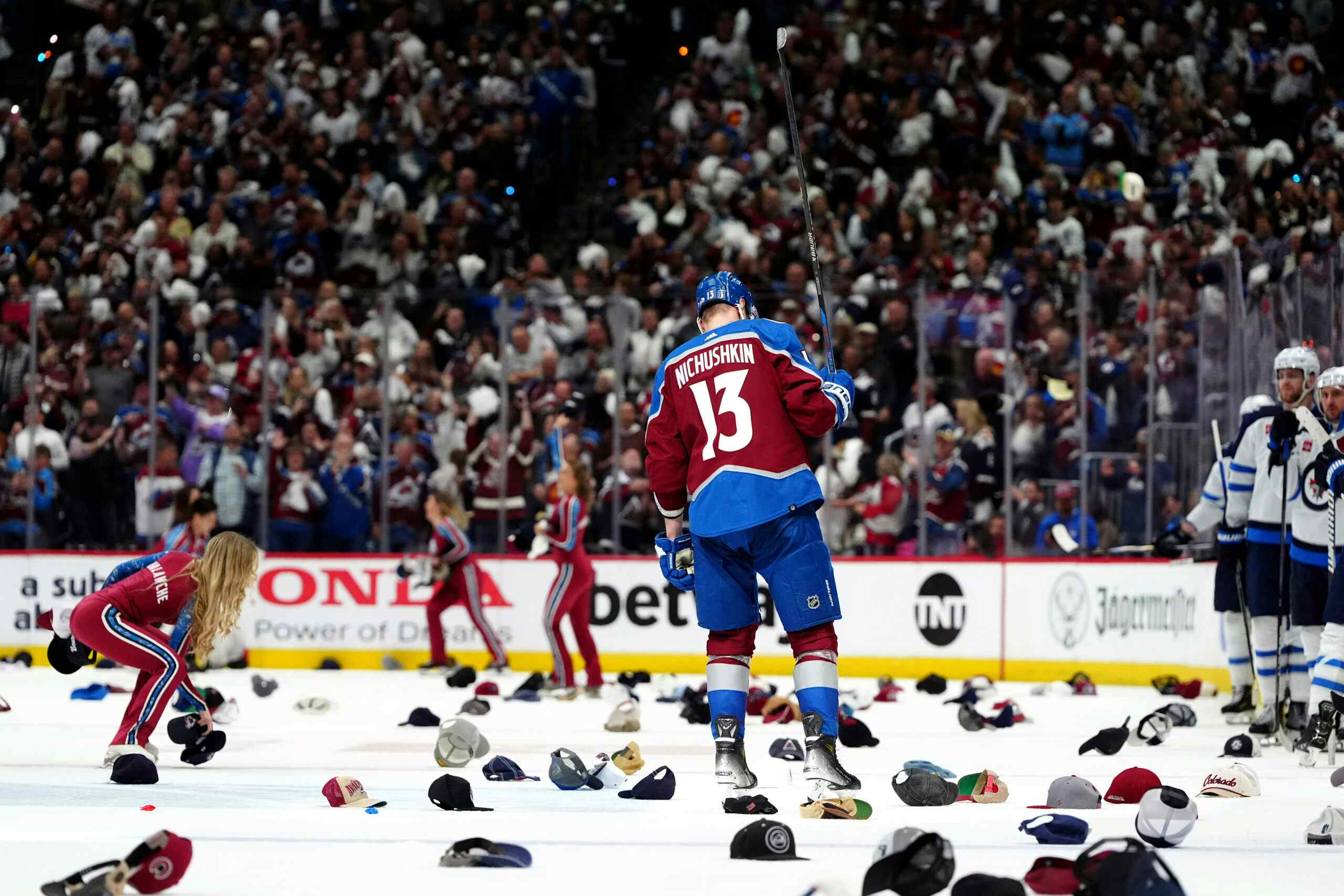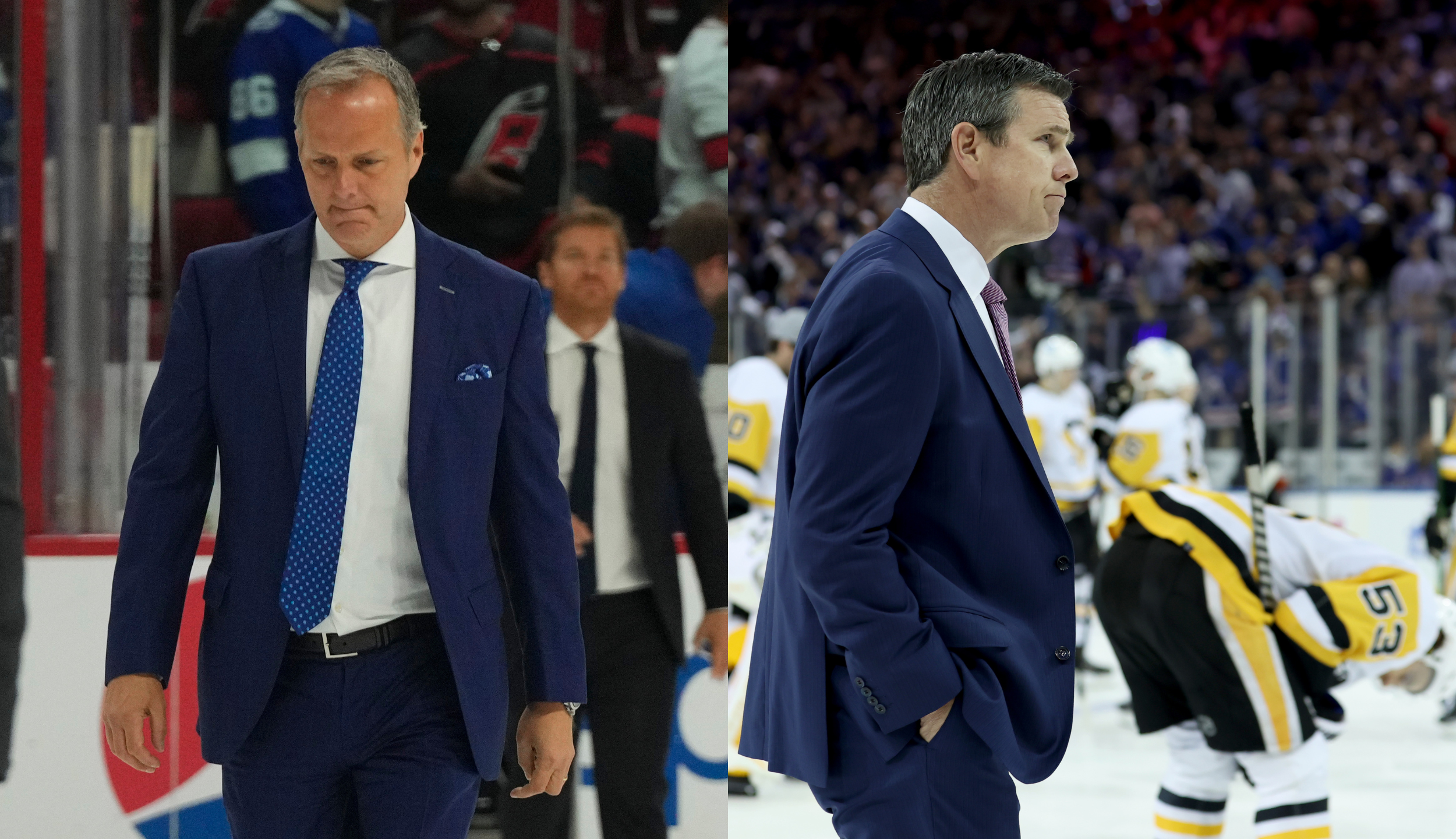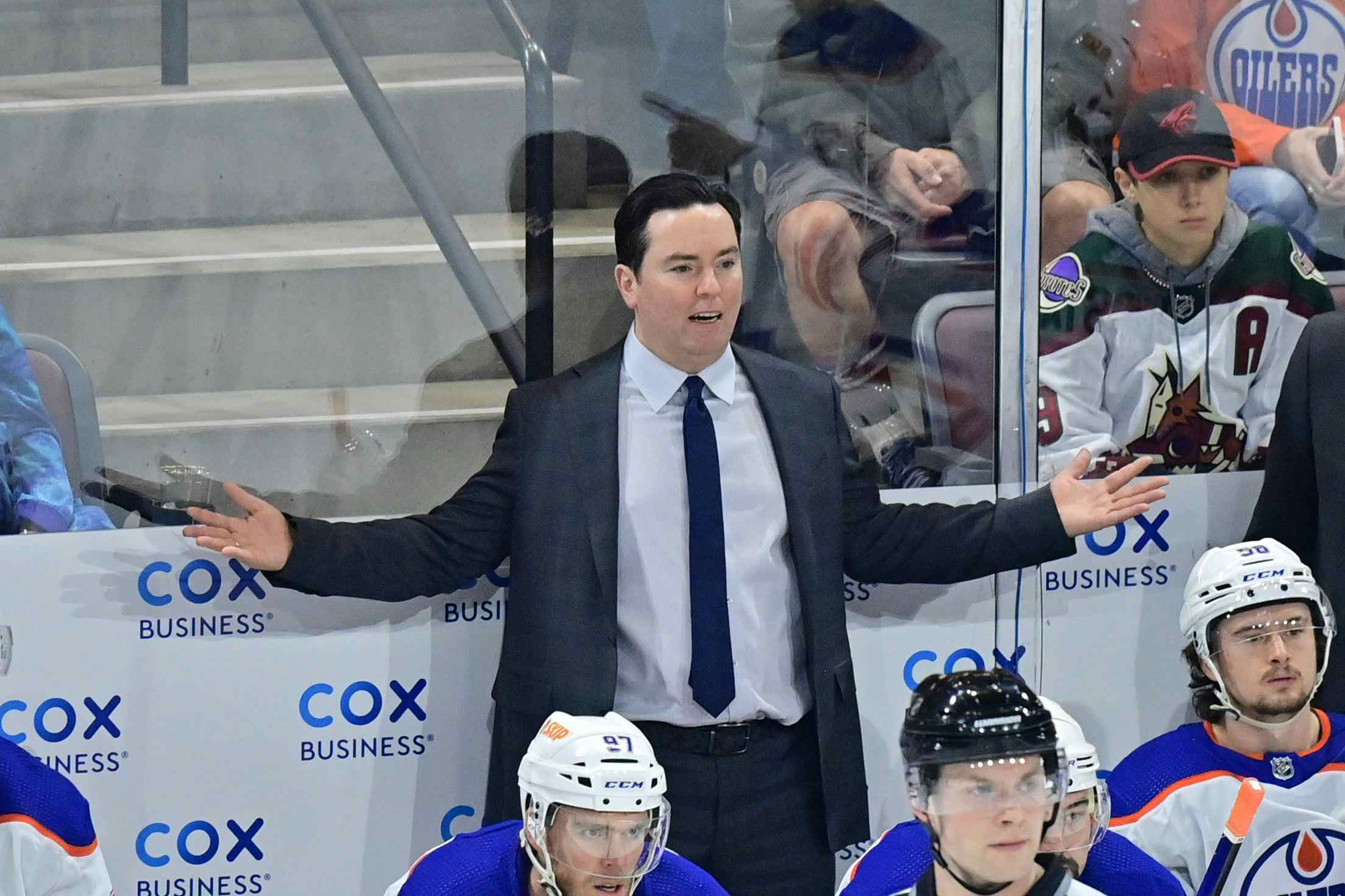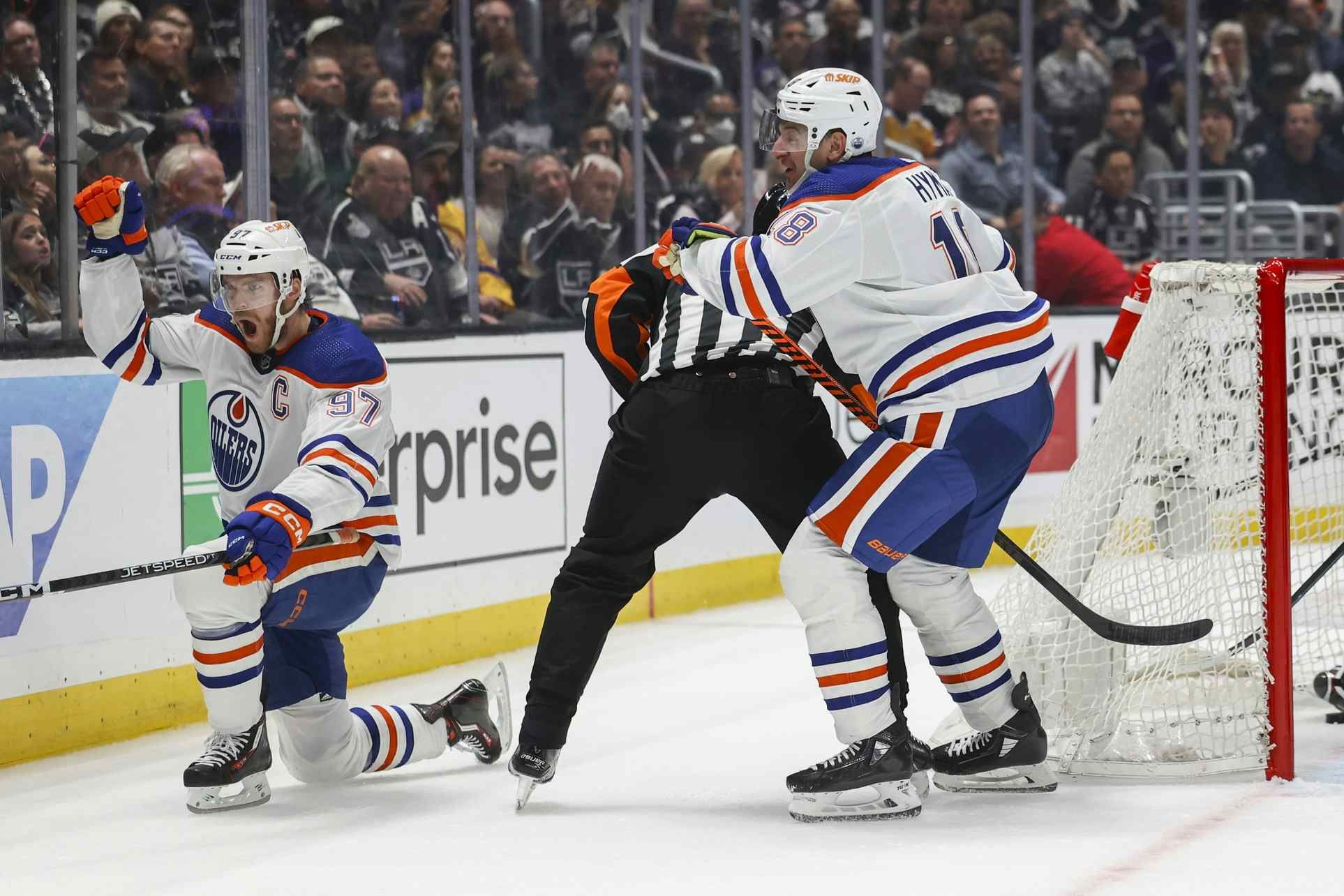NATION PROFILE: ANDY MOOG
By Lowetide
11 years ago
Overshadowed early and destined to make his mark in other NHL cities, Andy Moog gave Oiler fans a thrill of a lifetime playoff series against Montreal early in his career, and hung around long enough to be a part of three Stanley winners in Edmonton. He is remembered for many things these long years later, not the least of which was a memorable night for the Oil deep in the heart of Texas.
BEFORE THE DRAFT
| |||||||||||||||||||||||||||||||||||||||||||||||||
| |||||||||||||||||||||||||||||||||||||||||||||||||
PRE-DRAFT AWARDS AND HONORS WHL All-Star Second Team: 1979-80 (Billings) WHL Shutouts Leader: 1978-79 (Billings) (3 shutouts) Miscellaneous: Shared shutout with Neil Girard for Billings (WHL) in 1978-79. |
Selected by Edmonton Oilers round 7 #132 overall 1980 NHL Entry Draft–one of the extreme value picks in the team’s history.
(courtesy hockey draft central)
EARLY CAREER

Andy Moog put himself on the NHL map along with the other Boys on the Bus in an electric three day period in April, 1981. On the 8th, Edmonton defeated the Montreal Canadiens 6-3 in G1 of a best-of-5 series–at the Montreal Forum. The next night they did it again, downing the Habs in Montreal 3-1.
Two nights later, at Northlands Coliseum in Edmonton, Andy Moog and the Oilers doused the Flying Frenchmen 6-2. Many hockey observers didn’t know how to pronounce Moog’s name:
- EM Swift, April 21/81 Sports Illustrated: Glen Sather dressed a 21-year-old goaltender named Andy Moog (pronounced Moag), who had only seven games of NHL experience before starting the playoff opener. Moog is short and dumpling like and he looks like a choirboy. The way he plays is another matter, for he combines the butterfly style of a Tony Esposito with the amazing hands and rebound control of a Ken Dryden. Still, it was a shocker whenSather started him in place of veteran Gary Edwards.
MEMORABLE MOMENTS
- 3 Stanley Cups (1984, 1985, 1987)
- Moog was the goalie of record for the first NHL postseason win in Edmonton history, beating Canadiens 6-3 on April 8, 1981, in Montreal.
- Retired with No. 6 ranking on NHL all-time goalie wins list.
- Ended NHL career with highest winning percentage of any goalie with more than 300 career wins (.622).
TRADE

Moog’s future looked bright in Edmonton in the spring of 1981. However, at the draft that summer Edmonton selected Grant Fuhr in the first round, and Fuhr was the man who ended up winning the #1 job with Glen Sather. The inactivity and secondary role never set well with Moog, so he played out his option in 1986-87 and decided he wanted out of Edmonton rather than to re-sign with the team as a restricted free agent for the 1987-88 season.
A few weeks before Edmonton’s 1987 training camp opened, Moog’s agent, Herb Pinder, announced that Moog would never play for the Oilers again. Edmonton general manager Glen Sather was not looking to deal Moog, and he told Pinder that Moog had better find another job because the Oilers would not give in to threats and would take their time in trading him. Sather had learned his lesson nearly six years earlier, when he met Eddie Mio’s trade demand and did not get proper value in return.
Pinder insisted that Moog wasn’t just interested in money, but rather the freedom to choose his own team. Restricted free agency did not give him that freedom, so he was taking more dramatic measures by holding out. Although Vancouver and Pittsburgh both expressed an interest in signing Moog, they were both unwilling to risk the compensation owed to Edmonton, which would include at least a first-round draft choice. To force the issue, Pinder announced that if a trade was not made before the season, Moog would join Team Canada for its 1987-88 pre-Olympic tour and the 1988 Olympics in Calgary. Moog went ahead with plans to join Team Canada, where he was reunited with his former Billings coach, Dave King, in September 1987, and stayed out of the NHL for 1987-88.
Seeing Moog would never come back, Sather waited until the end of the Olympics before finally trading him to Boston before the 1988 trade deadline. Moog wasted no time joining his new team, as he immediately signed a five-year deal with the Bruins and returned to NHL action in Boston’s March 12, 1988, game at Quebec. He made 34 saves in a 4-3 victory.
Sather did very well in the trade, acquiring future Conn Smyth winner Bill Ranford, F Geoff Courtnall and a 1988 2nd rd draft pick for him.
LEGACY

Andy Moog had two important sources of inspiration for tending goal in his life: his father, Don, who was an outstanding amateur goaltender, and his NHL idol, Gump Worsley, whose picture hung in his locker. Although small, the younger Moog had cat-like reflexes, a quick glove hand, a great sense for positional play and an outstanding ability to control rebounds all of which impressed the scouts.
He was drafted out of the Western Hockey League by the Edmonton Oilers in the seventh round of the 1980 Entry Draft. After spending most of his first two seasons in the minors, Moog played the next five years with the Oilers, teaming with Grant Fuhr to lead the club to three Stanley Cup victories.
(HHOF)
GZOWSKI
In desperation, the Oilers, who had flirted with two other minor-league goalies over the year, called up a baby-faced 20 year old named Andy Moog. Moog had good breeding–his father Don had been a backup goaltender with the Penticton Vees in 1955, when the Vees went to the world championship, one of the last times a Canadian team won that tournament. But Andy had been the 132nd player chosen in the draft; the Oilers had taken him from a junior team in Billings, Montana. More than almost any of their other draft choices, he was a "Barry Fraser" special. On the forms Fraser had designed to rate goaltenders, where "use of stick,", "control of rebounds," use of hands" and "durability" replaced the skating and checking characteristics of the forwards and defensemen he ranked high, although in practice at training camp he had frequenty looked dreadful. He was not a practice goalie, he insisted to the few people who listened to him in camp; he saved his skill for games.
SORRY ANDY–THE GOAL
Sorry, Andy.
Recent articles from Lowetide





